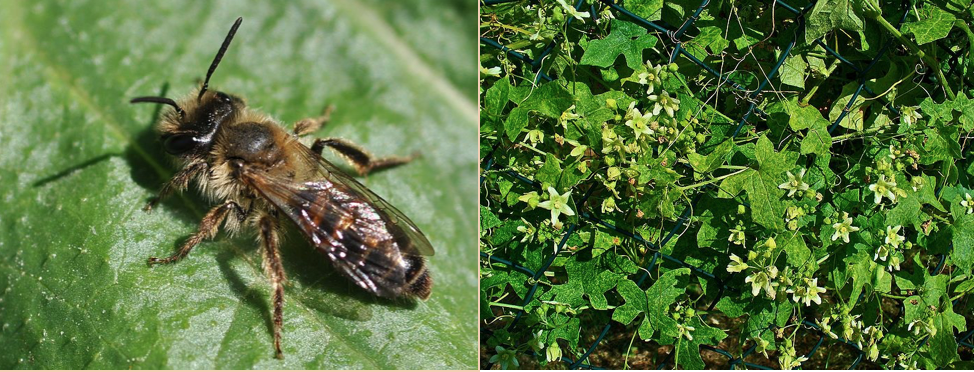Pollinator-friendly actions are nothing new to Falkirk Council. Over the years they have been involved in a range of projects which have made life easier for pollinators, and brought considerable enjoyment to people.

So what have they been up to lately? We caught up with Anna Perks, a local biodiversity officer, to find out.
“I think one of our most exciting local developments has been that Falkirk Council has commissioned consultants to carry out a piece of work looking at the potential for habitat creation on our land/buildings to help sequester CO2. Although CO2 sequestration is our primary goal, we anticipate that many of the identified opportunities will also have benefits for pollinators and other biodiversity.
“To deliver this project we will be looking at a range of habitat creation opportunities, including woodland, long grassland, wetland, and green/brown roofs and walls.”
Other bodies liaise with Falkirk Council to good effect in projects which, in passing, improve prospects for pollinators. Take, for example, the work of amphibian and reptile specialists Froglife. As part of their ‘Come Forth for Wildlife’ project they created a number of small meadow strips in four of Falkirk’s parks. That was great news in its own right, but in late 2020 volunteers carried out a bit of supplementary sowing at those meadows. It’s a classic example of where helping one element of biodiversity can have a positive knock-on effect for another group.

Anna has developed a keen eye for new ideas or practices and relays these to her colleagues where there is a potential biodiversity gain.
“I have written a report detailing proposed changes to Falkirk Council’s grass and verge cutting regimes”, she explains by way of example. “This could not only benefit biodiversity but meet other objectives such as our aims to take action to combat climate change, and deliver budget savings. I have just had approval from the Council to implement a pilot phase of these changes this year (at 35 sites) and review these in spring 2022 with a view to wider roll out after that.”
Anna is realistic that change doesn’t always happen overnight. However, approval to run this pilot represents significant progress, It’s an excellent sign of the direction things are headed.
This forward thinking is nothing new in a council area which saw pollinator-friendly planting in a range of parks in spring 2018, and native bulbs planting in autumn 2018 to complement those new meadows. This tied in well with Buglife Scotland’s B-lines initiative and engaged several local groups with pollinator activities. Working with groups such as Buglife Scotland has been a welcome element of Falkirk’s approach.

And the progress on ‘completed’ sites continues with the council recently purchasing equipment that allows them to cut and lift long grass – a key element to building on the good initial planting work. This will prevent soil becoming too nutrient-rich and favour wild flowers.
It’s intriguing to see how Falkirk has built on its early actions to continue to make solid environmental improvements. Come spring and summer the community here will be able to enjoy a host of pollinator friendly flowers. And that’s great news for pollinators – and people.













